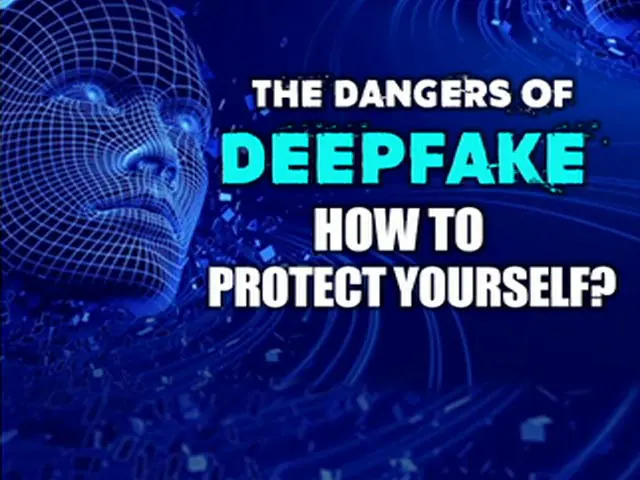In today’s digitally connected world, where technology evolves at lightning speed, it’s getting harder to distinguish between what’s real and what’s artificially generated. The term “deepfake” has become increasingly common, and with the rise of generative AI tools, identifying fake videos, audios, or even images has become a modern-day necessity. If you’ve ever questioned whether a video or voice message is genuine, you’re not alone. This article will help you understand how to detect deepfakes and protect yourself from AI-generated scams and misinformation.
What Are Deepfakes?
Deepfakes are manipulated media—usually videos, audio recordings, or images—created using artificial intelligence (AI) and machine learning. These fakes can make it appear as if someone is saying or doing something they never did. Whether it’s a political figure endorsing a false message or a scammer impersonating a relative, the potential damage of deepfakes is significant.
Why Is Deepfake Detection Important?
As deepfake technology becomes more accessible and convincing, the threats to privacy, security, and public trust increase. Cybercriminals use deepfakes in phishing attempts, financial fraud, and to spread fake news. That’s why deepfake detection techniques are now a crucial tool for everyone—especially those who consume a lot of digital content or manage sensitive data.
8 Practical Ways to Detect Deepfakes
Let’s break down some common signs and tools that can help you spot a deepfake before it causes harm:
1. Analyze the Eyes and Facial Movements
One of the most obvious signs of a deepfake is unnatural blinking, odd eye movement, or rigid facial expressions. Since many deepfake models struggle to replicate natural human blinking or subtle facial tics, closely watching the face can be revealing.
2. Pay Attention to Voice and Lip Sync
Deepfake audio often includes unusual speech patterns, lack of emotional tone, or robotic pacing. Additionally, lip-syncing can be slightly off—even a split-second delay between mouth movement and sound can be a clue that the content is fake.
3. Look for Visual Inconsistencies
Check for mismatched lighting, strange reflections, odd shadows, or warped backgrounds. These visual glitches often appear because deepfake generators may not accurately simulate real-world lighting or environmental conditions.
4. Check the Metadata
If you have access to the original file, examine the metadata (file creation details, editing history). In many cases, fake media has missing or suspicious metadata, hinting that the content may not be authentic.
5. Use Deepfake Detection Tools
There are a growing number of AI-based deepfake detection tools. These platforms analyze media files and provide a probability rating of whether a file is fake. While not perfect, they can offer useful insights, especially when combined with manual observation.
6. Listen for Background Noise
Deepfake audio often lacks consistent ambient noise, making the speech sound isolated or “too clean.” Legitimate audio usually contains small background details—paper shuffling, traffic, or breathing—which are hard to mimic convincingly.
7. Context Check: Who Shared It and Where?
Always ask yourself: Where did this come from? Is this source reliable? Scammers often distribute fake media through suspicious or unverified social media accounts, private messages, or newly created pages to avoid scrutiny.
8. Reverse Image and Video Search
If an image or frame seems suspicious, run it through a reverse image search to see if it has appeared elsewhere. This can reveal whether the content was pulled from another context or fabricated.
The Real-World Dangers of Deepfakes
Understanding how to identify deepfake content isn’t just an academic exercise—it has real-world consequences:
-
Scams and Financial Fraud: Scammers use fake audio or video messages to impersonate company executives or family members requesting money.
-
Political Misinformation: Deepfake videos of politicians or celebrities spreading false information can sway public opinion.
-
Social Engineering: Fake job interviews or HR communications using deepfake video calls are becoming common in cybercrime.
-
Reputation Damage: Public figures or private individuals can be targeted with fake media that harms their reputation or relationships.
How to Protect Yourself from Deepfake Scams
Besides learning to detect deepfakes, you can also take proactive steps to protect yourself:
-
Verify Information Before Sharing: Don’t forward or repost videos or messages unless you’re certain they’re real.
-
Enable Two-Factor Authentication: Especially if you manage social media or company accounts—prevent impersonation attempts.
-
Educate Friends and Family: The more people know about deepfakes, the harder it is for scammers to succeed.
-
Stay Updated on Technology: New detection tools and safety features are being developed regularly. Keep your systems and software updated.
The Future of Deepfakes: What Lies Ahead?
As deepfake generation becomes more realistic and accessible, the line between reality and fiction may continue to blur. Tech giants and startups alike are developing more advanced fake video identification tools to counteract the threat. In the future, blockchain-based verification and watermarking may become industry standards for authenticating media.
At the same time, AI-generated misinformation is evolving. We may see entirely synthetic news anchors, influencers, or even AI-generated podcasts soon. This is why staying informed is the best defense.
Final Thoughts
The digital age has brought us incredible convenience—but also new risks. With deepfakes becoming more prevalent and realistic, learning how to detect deepfakes is no longer optional. It’s a critical life skill that protects your identity, your money, and your trust in information.
By applying the practical detection tips shared in this article and staying alert to the signs of deepfake scams, you’ll be better prepared to navigate today’s AI-powered media landscape safely.
✅ Summary of Key Takeaways:
-
Deepfakes are AI-generated media designed to mislead.
-
Learn to spot signs like visual glitches, voice mismatch, and unnatural movements.
-
Use context, reverse searches, and metadata analysis to verify content.
-
Always think critically before sharing digital content.
